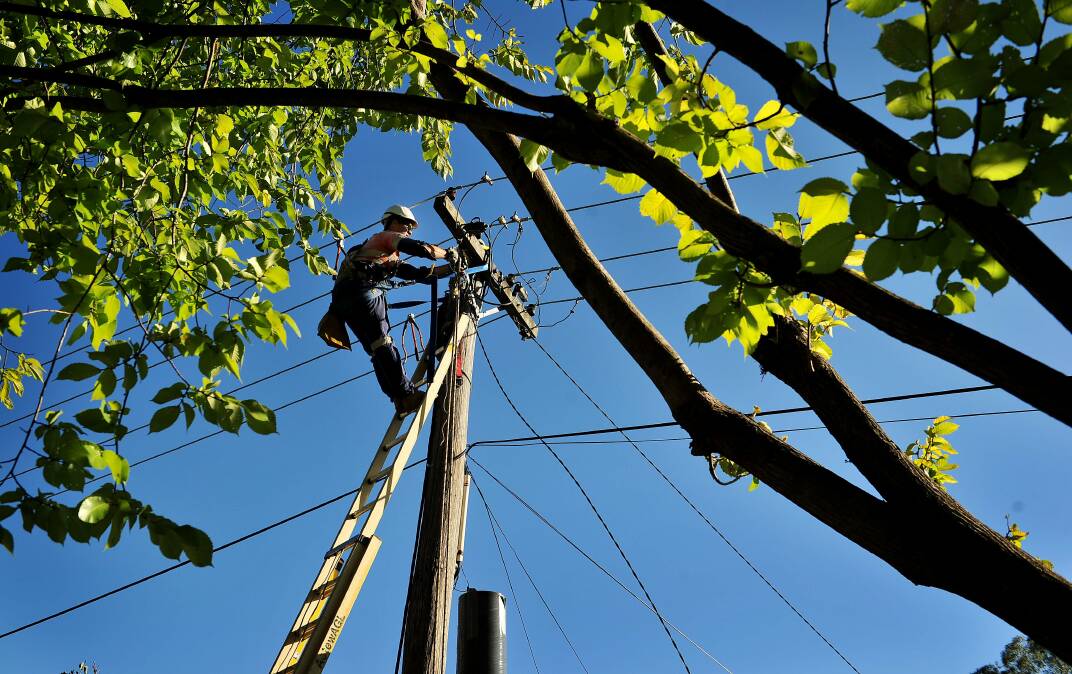The average electricity bill in the ACT rose by $115, a below-inflation increase, as the territory benefits from long-term renewable energy contracts.
The average single-rate electricity bill for all-electric householders consuming about 8000 kilowatt hours went up by 5 per cent.
A long-term project to track energy prices in the ACT found annual gas costs have grown by $290, or 14 per cent, since July 2022.
The ACT's inflation rate in the year to the June quarter was 5.7 per cent.
The St Vincent de Paul Society and Alviss Consulting report found average Canberra households on ActewAGL's regulated electricity rate and gas standing offer connected to both electricity and gas had bills increase by 9 per cent, or about $380.
The difference between the highest and lowest electricity market offers was $710, while a typical household could save up to $815 a year by switching from the regulated rate to Origin Energy's market offer.
The annual bill for households on ActewAGL's regulated rate, which has a flat-rate tariff, typically went up by $105 or 4 per cent since July 2022.

The increase in the average electricity market offer bill of 5 per cent largely reflected the impact two retailers - Energy Locals and Nectr - who did not publish offers in July 2022 had on the price.
ActewAGL's electricity market offer increased by 2 per cent, while Energy Australia dropped by 11 per cent, Origin Energy dropped by 23 per cent and Red Energy dropped by 10 per cent.
ActewAGL has about 74 per cent of the electricity market share in the ACT, despite full retail market competition being introduced in the territory two decades ago.
The gas market offer bill has remained the same since July 2022 on average, while ActewAGL's gas market offer decreased by 11 per cent.
Energy Australia, Origin Energy and Red Energy had gas market offer bill increases of 3, 2 and 9 per cent respectively.
The report found energy supply charges had increased by between 5 and 8 per cent since July 2022.
"Electricity customers on the flat rate or a time of use tariff now pay around $395 per annum in fixed supply charges while customers on the inclining block tariff will pay approximately $495," the report said.
"The gas supply charge has remained static and ACT households continue to pay $305 per annum in order to be connected to natural gas."
Households with 3 kilowatt hour solar systems pay an average energy bill of $1535, which represents a saving of $755 compared to households without a solar system.
"A household with a 3kW solar system installed will receive approximately $445 per annum in [feed in tariff] credits from ActewAGL while Nectr's offer would pay around $130 per annum," the report said.
Average residential electricity bills in the ACT were set to rise by $75 a year from July, with the independent pricing regulator signing off on a maximum 4.15 per cent increase to standing offers.
The Independent Competition and Regulatory Commission said the ACT would have among the smallest increases in the national electricity market.
Independent Competition and Regulatory Commission senior commissioner Joe Dimasi in June said the price rise was driven by a significant increase in the wholesale electricity costs.
"This increase will be largely offset because the ACT government scheme costs have decreased substantially this year resulting in a rebate to customers," Mr Dimasi said.
Chief Minister Andrew Barr said the ACT would have the lowest electricity prices on Australia's east coast.
"Our long-term, fixed-price contracts are demonstrating their value now in ensuring that electricity prices in the territory are not rising anywhere near the rate that's occurring across the border in New South Wales or in Queensland, Victoria or South Australia," Mr Barr said.
Mr Barr said most low- and medium-income households in the territory would have a price decrease once ACT and Commonwealth energy rebates were factored into their bills.
Electricity bills in other parts of Australia, including in NSW, southeast Queensland and South Australia, will increase by up to $600 each year because of a new ceiling price cap.
From July 1, residential customers were expected to face price increases of 19.6 to 24.9 per cent, depending on their region.







